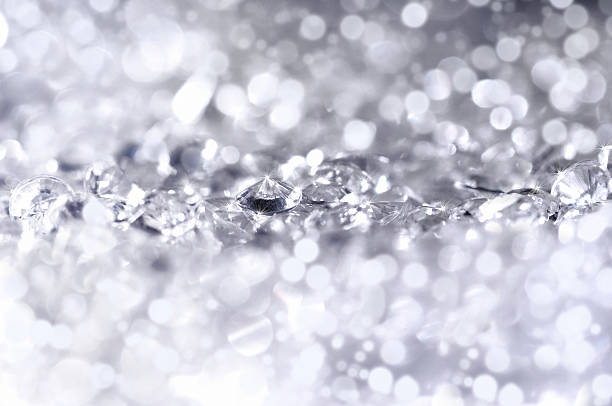What Affects the Value of a Diamond? All Entries

Hollywood film stars helped popularize diamonds during the 1940s/1950s era, marking the beginning of diamond engagement rings contributing to a global wedding tradition. A successful late forties advertising campaign called "A diamond is forever" set the tone for future demand of diamonds as symbols for status, love and achievement. That's a story of how sentimental value created market value over time. Of course, a diamond's value depends on many factors. Here are examples...
Sentimental Value
The basic foundation of what affects value of a diamond starts with the premise that someone has to care about it. If a large population of buyers care about a particular gem, then its market value may rise. Every diamond is unique so you cannot generalize about factors that affect the value of all diamonds. But without anyone having sentimental value for a specific jewel, it might sit on the shelf at the store, occupying space that could be better utilized with a higher-demand item.
Synthetic diamonds are generally not as expensive as natural diamonds, but if someone has strong sentimental value for a synthetic jewel, they may be willing to pay any price they can afford for it. Estate jewelry, which is passed down to survivors through inheritance, may have enormous sentimental value as a family item. In that sense, family members may consider it to be priceless.
Market Value
When you want to buy or sell diamond jewelry, you've got to consider its market value. There's the primary market of vendors that sell new merchandise directly to consumers and there's a secondary market in which resellers buy and sell items.
The market value of a diamond tremendously reflects its condition as a gem based on evaluation by a professional gemologist trained by Gemological Institute of America (GIA) principles. GIA's diamond grading scales are recognized globally by the jewelry industry. The standard test for evaluating the condition of a diamond is the 4Cs: cut, color, clarity and carat.
Many times carat weight of the gem has the most impact on pricing, if it's a clear and colorless diamond. Then again if the cut is crafted artistically, it can drive up the jewel's value.
Market value is ultimately derived from the dynamics of supply and demand. When the supply diminishes, demand can push the perceived value and price higher. In 2016 long-time diamond miner De Beers announced that the global supply of diamonds was near its peak. As a result, pure diamonds are becoming increasingly more valuable.
Loose diamonds, which are the stones without being mounted to metal, can be purchased at lower retail prices than as part of jewelry that encompasses them. One way to get the best possible deal for diamonds is through an auction of buyers and sellers.
Liquidation Value
Another factor that affects value is the time frame for selling a diamond. If you want to sell it as soon as possible, you may have to settle selling it at its liquidation value. That means a lower than market price that will attract an instant sale. When there's little demand but you need quick cash, the liquidation value can keep sinking until you find a buyer regardless of all other factors.
Conclusion
Understanding what affects value of a diamond will give you clear expectations of what people are willing to pay for it. Buying or selling a diamond through a jeweler associates more with market value, whereas if you're trying to trade the item for cash quickly, you need to consider its liquidation value. Contact us at Ralph Mueller & Associates for more information on diamonds and other beautiful jewelry.